Succulents are interesting plants making everyone fall for them at first sight. Their vivid natural appearance and leaves filled with water give them a unique look attracting new plant parents every day. Below, we’ll talk about succulent fungus.
Whether you begin with succulents or are an advanced plant care person, there is no chance to avoid fungal infections.
It is not strange to feel hopeless and desperate and look for why your plant starts to die when it comes to succulent fungus.
This article tries to provide you with all the necessary information to calm you down and lead you to the solution.
Continue reading to learn more about fungal types of diseases, common reasons, and ways to help your plant stay alive.
Why is My Succulent Infected with the Fungal Disease?
The first question you might have when suspecting the fungal disease is present in your succulent.
Even if can be more reasons, there are two things usually leading to infection with fungi.
The main reason is a place with high humidity and low air circulation.
Keeping in mind that succulent plants thrive best in dry areas, we should avoid stressing them by giving as much air circulation as possible and watering when needed.
Another thing causing disease may be contaminated pots.
If you have had a plant infected before and do not clean the pot properly before putting a new plant inside, it can transmit the infection and cause serious problems later.
RELATED: Nature is Sweet As! 10 Different Types Of New Zealand Trees
Common Succulent Fungal Diseases and Treatment
Powdery Mildew
Easy to recognize fungal infection caused by Erysiphe spp.
It will spread fast after attacking your plant, producing white mycelium on the plant surface.
This infection may cause fatal consequences if left untreated. In the beginning, you may see brown-yellow dots on your plant leaves, or more often, just a white sugary coating covering the whole.
Usually, this fungal infection appears in the mid-season when humidity is higher, there are many spots of rain, but the sun is just occasionally showing.
It is best to treat immediately with homemade pesticides based on baking soda, dishwashing soap, and oil or buy common pesticides suggested for this use.
Label showing toxicity and dosage instruction, so always keep an eye on it.
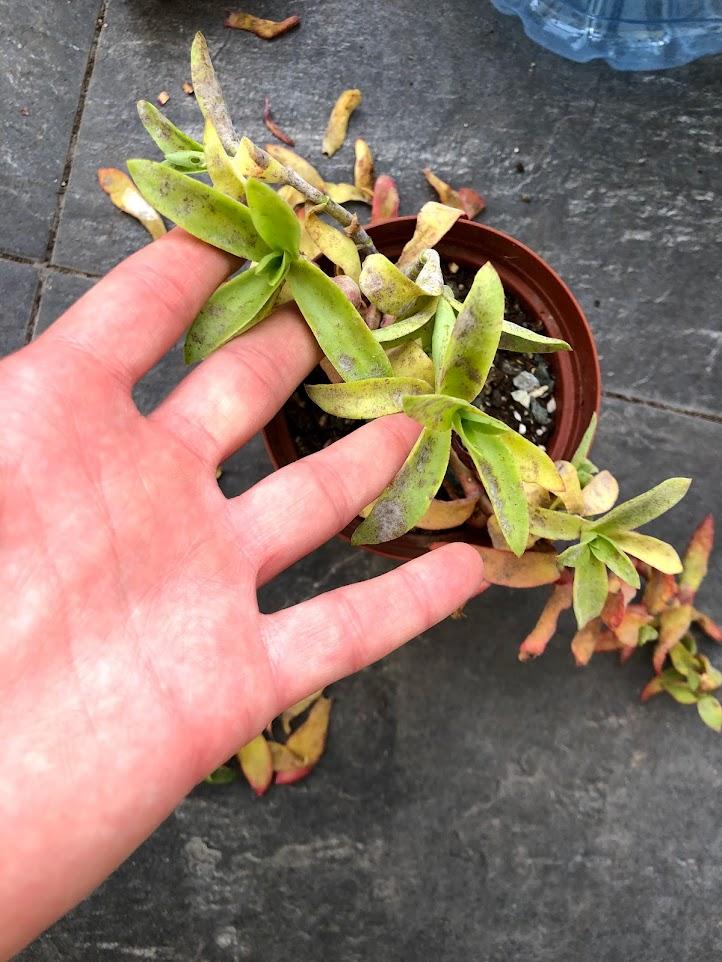
Succulent Rust
Yes, you read it correctly. A specialized group of fungi named “rust fungi” causing rust alike stains on plant leaves.
Since this fungus is an obligate parasite, it can live with high potential when it finds a perfect landlord–in this case, your succulents.
You will soon be able to see leaves falling, plants suffering and not growing, dark-brown spots on leaves, etc.
You may want to use sulphuric or copper powder to sprinkle weekly on your damaged plants to manage this disease. Also good natural choice is Neem oil or baking soda combined with some oil. Anyhow, you always have a market option to buy pesticides with a specific intention.
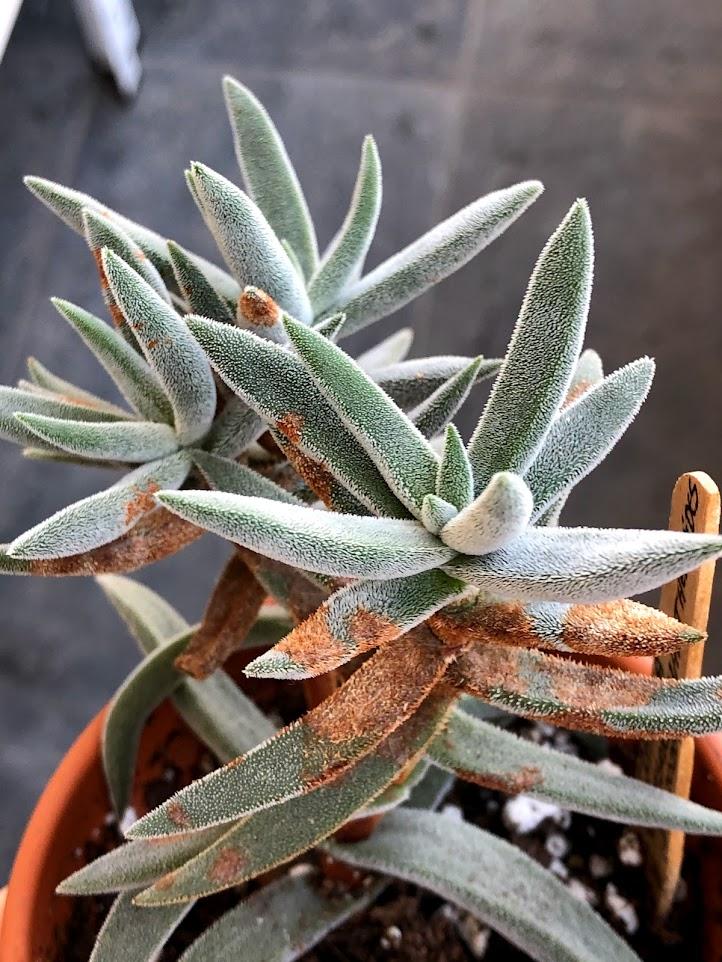
Types Of Fungal Molds In Succulents
Molds are often present in succulent plants. In general, they are signalizing some problems with pests or high humidity.
To prevent your potted plants from severe damage, we will present molds detectable on the plant surfaces and ways to save your affected plant.
Black Mold (Sooty Mold) – Get To Know It!
This mold is present because pests suck the sweet substance from the vascular tissues. As a result, plant tissues become more sensitive and show dark fungal bodies on the plant leaves.
Even though this is the least damaging fungi, there can be mealybugs or other insects necessary to treat with the pesticide to save your plant.
If you want to try DIY fungicides, check local stores for neem oil or organic soap supplies.
Cooking oils are also a good resource adding additional value to the homemade pesticide mix.
Anyhow, if you want to proceed with the store option, ask the supplier for an adequate one.
Gray Mold (Botrytis Cinerea) – Get To Know It!
This fungal infection occurs due to poor air circulation, high humidity, or water from the top.
It is not killing your plant fast but persisting as grayish-brown spore masses on the surface of the leaves.
If not treated, grey mold will affect the plant’s photosynthesis process and spread quickly.
You can also realize your plant is dropping older leaves faster, and the color changes due to the fungus problems.
However, always check for damaged tissue and see if the infection spreads on the new leaves.
Treat all fungal infections with a fungicide when noticed. Follow the label instructions for best results. If the plant is in a late stage of fungal pathogens infection, it is best to cut off damaged parts and leave only healthy tissue on the succulent.
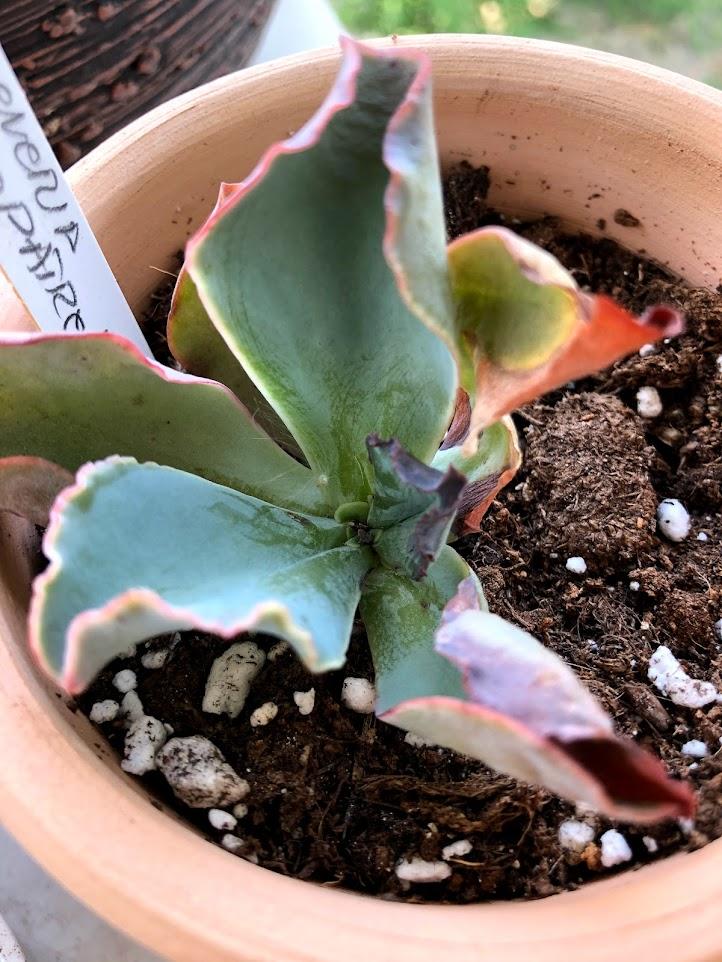
Gray Mold (Botrytis cinerea) – get To know It!
This fungal infection occurs due to poor air circulation, high humidity, or water from the top.
It is not killing your plant fast but persisting as grayish-brown spore masses on the surface of the leaves.
If not treated, it will affect the photosynthesis process of the plant and spread quickly.
You can also realize your plant is dropping older leaves faster, and the color changes due to the fungus problems.
However, always check for damaged tissue and see if the infection spreads on the new leaves.
Treat all fungal infections with a fungicide when noticed. Follow the label instructions for best results. If the plant is in a late stage of fungal pathogens infection, it is best to cut off damaged parts and leave only healthy tissue on the succulent.
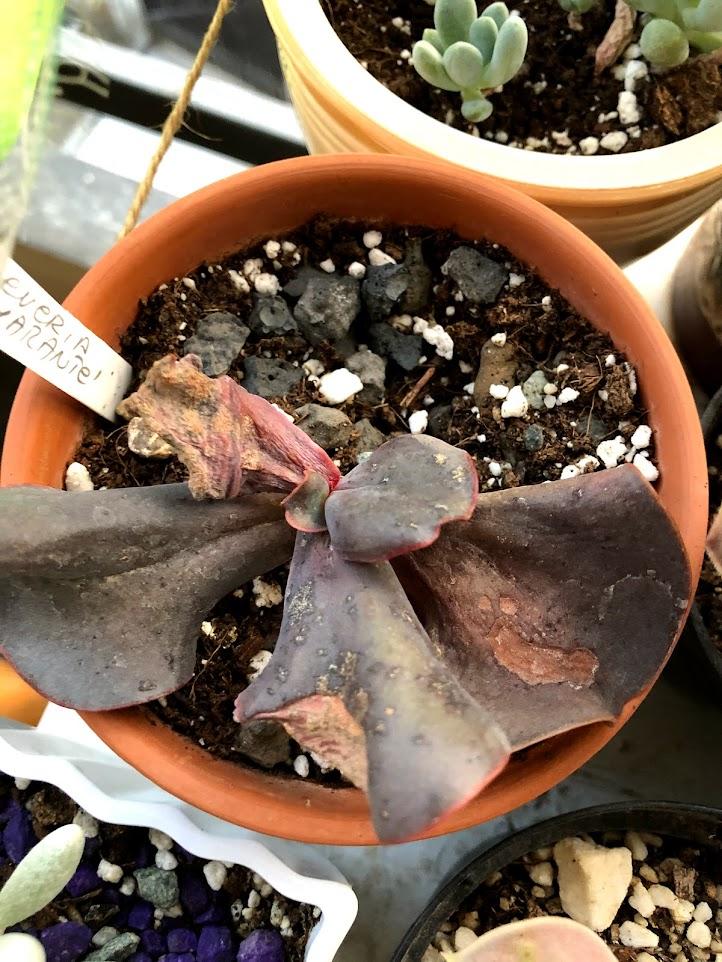
RELATED: How to Treat Plant Fungus with Baking Soda for Good?
Other Fungal Diseases In Succulents
Despite molds, fungal attacks may present various symptoms visible on your plant. Below, we listed a few more fungal diseases and specific signs that will show after infection on your plant.
Leaf discoloration/marks On succulent leaves
Some fungal species attack healthy succulents by only leaving spots on their leaves. If you do not treat infected parts on time, leaves will be completely damaged and lose their function.
Taking cuttings from the plant parts without infection may save your plant if the condition gets worst.
Anthracnose – Colletotrichum infection
When succulent has a problem with infection from the genus Colletotrichum, it is dangerous since it is challenging to overcome the damage on the tissues.
Visual appearance starts with orange/red/ pink bumps on the leaves’ surface, and the only way to prevent spreading it is to take off affected leaves.
Susceptible plants are best to be removed from the rest of the collection to prevent outspreading.
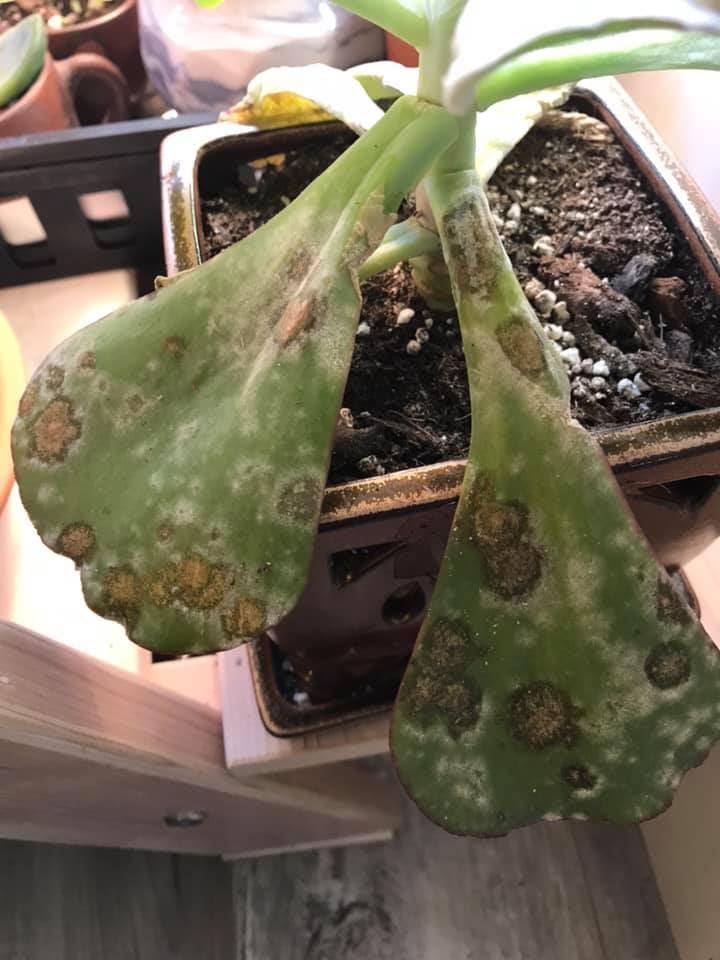
Fungal Root And Crown Rots On Succulent Plants
Moist tan-colored rot is the first sign your plant is dying because of the Phytophthora fungal genus.
This infection stays in the soil and moves into your succulent plant faster than you think, limiting water intake.
After some time, you will realize the dark color of the stem and leaves not taking nutritious like before, leaving them mushy and easy falling.
There is not much after the stem starts darkening except cutting off the healthy part and rooting the top of the plant in soil or water.
Before putting a new plant in the same container, consider disinfection the used pots. Throw away the ground and wash deeply through the water with soap all garden tools used in the process.
In the early stages of infection, you can treat this infection with a copper fungicide to kill fungal bodies left on the surface.
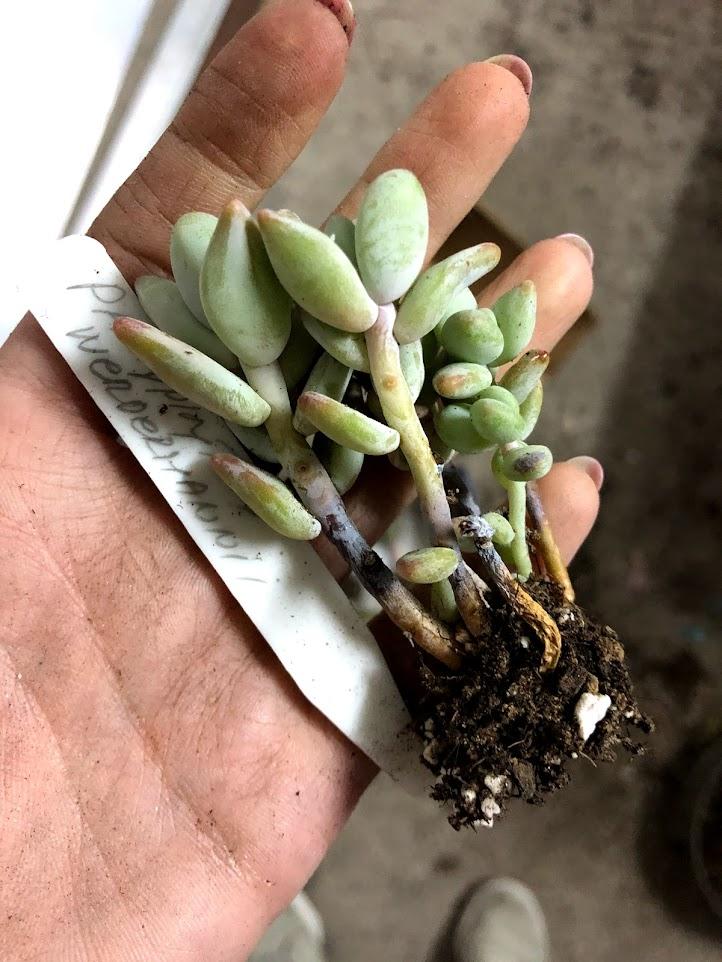
Fusarium Wilt In Succulents
One of the worst fungal infections is ready to kill your plant in a short period.
Early spring, when the weather becomes hot and the rain produces extra humidity, helped by nematodes in the soil, this fungus slowly moves from the roots to the upper leaf surfaces.
When damage is done, the plant has visible pink/white mold around leaves, signaling that the end of your beautiful succulent comes.
Specific symptoms are stem rooting, and the leaves eventually fall after being touched.
Ensure that your garden tools are perfectly clean before used on other houseplants.
The best treatment is early locating the problem, isolating your plant, treating with fungicide and cutting off the infected parts of the plant.
If the plant’s roots are entirely damaged, cut them off and start the rooting process again.
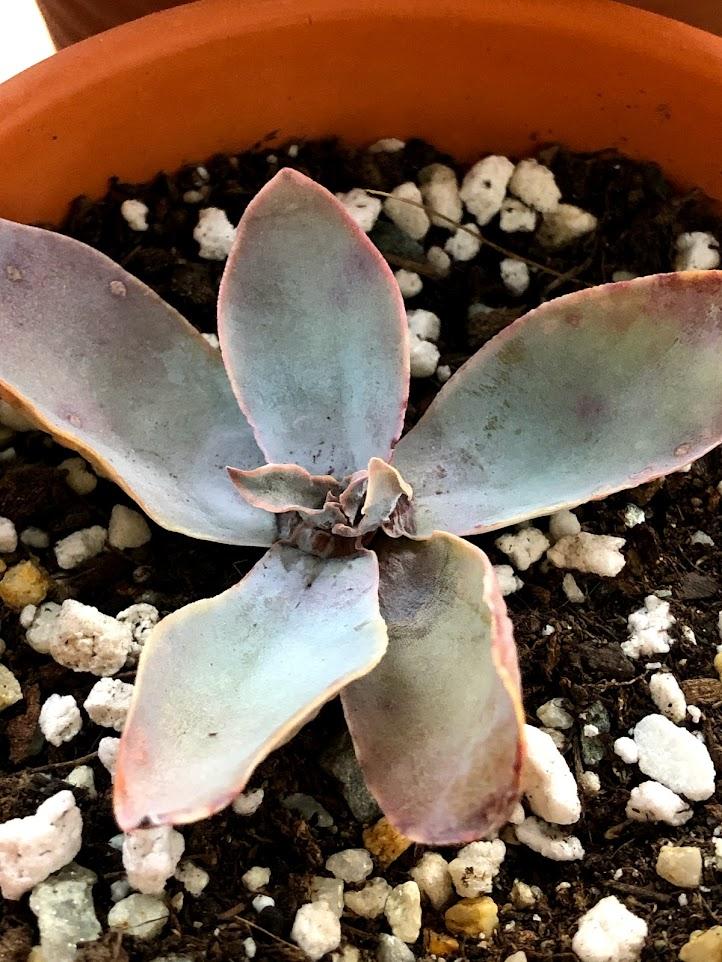
Frequently Asked Questions
For the ones more curious about this problem, we suggest reading our answers to frequently asked questions below:
What can I use to make organic fungicide?
Ingredients like baking soda, diluted alcohol, cooking oil, organic soap and neem oil are good choices for homemade mixture against fungal diseases
Why do fungal diseases attack succulents?
High humidity, warm weather, watering from the top are some of the reasons why fungus can harm your plant.
During the spring and summer periods, many bacteria live in the soil, quickly transmitting fungal diseases.
Regular treatment with fungicides may help your plants stay healthy longer.
Improving air circulation and humidity control may also be an excellent solution to avoid problems with succulent fungus.
How to produce new roots on succulent cuttings?
We mentioned a few times that the only option left is to cut the healthy part and root it again.
You can use different methods, but the most famous ones are rooting in water or rooting directly in soil with good drainage. Both ways are successful for growing new plants without fungal infection.
Know more on how to take care of your succulents, read these:
What Are Mealybugs? How to Kill Them on Succulent Plants?
Learn Easy Ways on How to Take Care of Succulents
Step by Step Guide to Preparing a Perfect Potting Mix for Your Succulents







